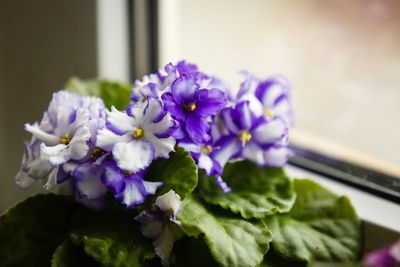About African Violet Pruning
African violets are a bit old fashioned, but they are still one of the most popular indoor blooming plants. With their softly furred leaves, intensely colored blooms and diminutive size, they snuggle into any moderately bright area of the home. One of the easiest chores that helps the plant attain perfection is trimming African violets. This is a relatively simple task that just needs a little finesse but no real skill or timing. When we talk about pruning, it is easy to envision a tree or shrub and some large bladed cutting implements. These tools have nothing to do with trimming African violets, whose soft stems respond well to lighter means. All you need are some moderately useful fingernails or finely tipped scissors. When you cut back an African violet, the goal is simply to remove dead or damaged leaves and spent flowers. It is strictly a beauty regimen that also allows new growth to access more light and air. You can cut back an African violet at any time of the year, unlike the pruning rules on many other types of plants.
How to Prune an African Violet
In order to keep the plant at its healthiest, remove three or more bottom leaves every month. The plant produces leaves regularly, and this will help balance the appearance of the violet while allowing old leaves to make room for new. Remove spent flowers as they occur. This will help promote the growth of new blooms because the plant doesn’t have to direct any energy to old flowers. It also enhances the appearance of the plant and encourages air flow. Using your forefinger and thumb to pinch off the leaf or flower is one way of pruning African violets. You can also use sterilized scissors. Remove plant material as close to the base as possible without cutting into the main stem.
Bonus of Pruning Basal Leaves
African violets are very forgiving plants and don’t mind the removal of some healthy basal leaves as you strive for the plant’s best appearance. Best of all, these leaves are useful for starting new African violets. Fill a small pot with well-draining, moistened African violet soil and insert the leaf petiole into the medium. You can also root the leaf in water. Use toothpicks to support the leave itself above the water. In just a few months, you will have many new leaves and the plant will soon begin to produce those beguiling flowers.
